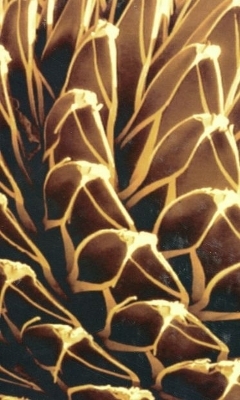
Instabilities and Self-Organization in Materials
Oxford University Press
978-0-19-929868-6 (ISBN)
In materials, critical phenomena such as phase transitions, plastic deformation and fracture are intimately related to self-organization. Understanding the origin of spatio-temporal order in systems far from thermal equilibrium and the selection mechanisms of spatial structures and their symmetries is a major theme of present day research on the structure of continuous matter. Furthermore, the development of methods for producing spatially-ordered and self-assembled microstructure in solids by non-equilibrium methods opens the door to many technological applications. There is an increasing demand for a better understanding of new materials from a more fundamental point of view. In order to describe and understand the behavior of such materials, dynamical concepts related to non-equilibrium phenomena, irreversible thermodynamics, nonlinear dynamics, and bifurcation theory, are required. The generic presence of defects and their crucial influence on pattern formation and critical phenomena in extended systems is now well-established. Similar to observations in hydrodynamical, liquid crystal, and laser systems, defects in materials have a profound effect. We found it thus timely to develop a unified presentation of tools, concepts, and methods that are useful to material scientists and engineers. Although specialized treatments of various topics covered in this book are available, we feel that a comprehensive approach may give the reader a higher vantage point. Hence, emphasis is placed on combining the basic physical, mathematical and computational aspects with technological applications within the material's life-cycle, from processing, degradation to eventual failure.
The book is divided into two volumes. The first volume is devoted to the most basic concepts of the physics, mechanics and mathematical theory utilized in the analysis of non-equilibrium materials. The reader is exposed to a rigorous background on material deformation, defect theory, transport processes, and the statistical mechanics and thermodynamics of phase transitions. Mathematical concepts of non-linear dynamics, such as bifurcation and instability theory, the dynamics of complex systems near pattern forming instabilities, the generic aspects of pattern formation, selection and stability are presented. Stochastic and numerical methods used in this field are also introduced. The methods and techniques developed in the first volume are applied in the second volume to specific problems in various advanced technologies. These applications include plastic and fracture instabilities, interfacial morphological instabilities in solidification, crystal growth, electro-deposition, surface instabilities in laser, plasma and chemical vapor processing, and material aging instabilities under irradiation and chemical corrosion attack.
Nasr M. Ghoniem University of California Distinguished Professor Vice Chair, Mechanical & Aerospace Engr. Dept. & Professor, Materials Science & Engr. Dept UCLA Daniel Walgraef Director of Research, Belgian National Fund for Scientific Research Brussels
VOLUME 1 ; 1. Introduction ; 2. Material Deformation ; 3. Elastic Theory of Defects ; 4. Transport Phenomena ; 5. Equilibrium Phase Transitions ; 6. Non-equilibrium Phase Transitions ; 7. Bifurcations and Instabilities ; 8. Instabilities in Reaction-Diffusion Dynamics ; 9. Amplitude Equations and Pattern Formation ; 10. Computer Simulation Methods ; Appendices ; VOLUME 2 ; 1. Benefits and Perils of Instabilities & Self-Organization ; 2. Phase Instabilities & Patterns ; 3. Radiation-Induced Instabilities ; 4. Surface Roughening, Patterns & Cracks ; 5. Self-Organization of Surface Atoms ; 6. Laser-Induced Deformation of Thin Films ; 7. Mechanical Instabilities ; 8. Instabilities in Solidification and Electrodeposition ; 9. Conclusions ; Appendices
| Erscheint lt. Verlag | 7.2.2008 |
|---|---|
| Reihe/Serie | Monographs on the Physics and Chemistry of Materials ; 63 |
| Zusatzinfo | 484 figures including 328 b+w line drawings and 156 b+w halftones |
| Verlagsort | Oxford |
| Sprache | englisch |
| Maße | 182 x 256 mm |
| Gewicht | 2971 g |
| Themenwelt | Naturwissenschaften ► Chemie |
| Technik ► Maschinenbau | |
| ISBN-10 | 0-19-929868-8 / 0199298688 |
| ISBN-13 | 978-0-19-929868-6 / 9780199298686 |
| Zustand | Neuware |
| Haben Sie eine Frage zum Produkt? |
aus dem Bereich


